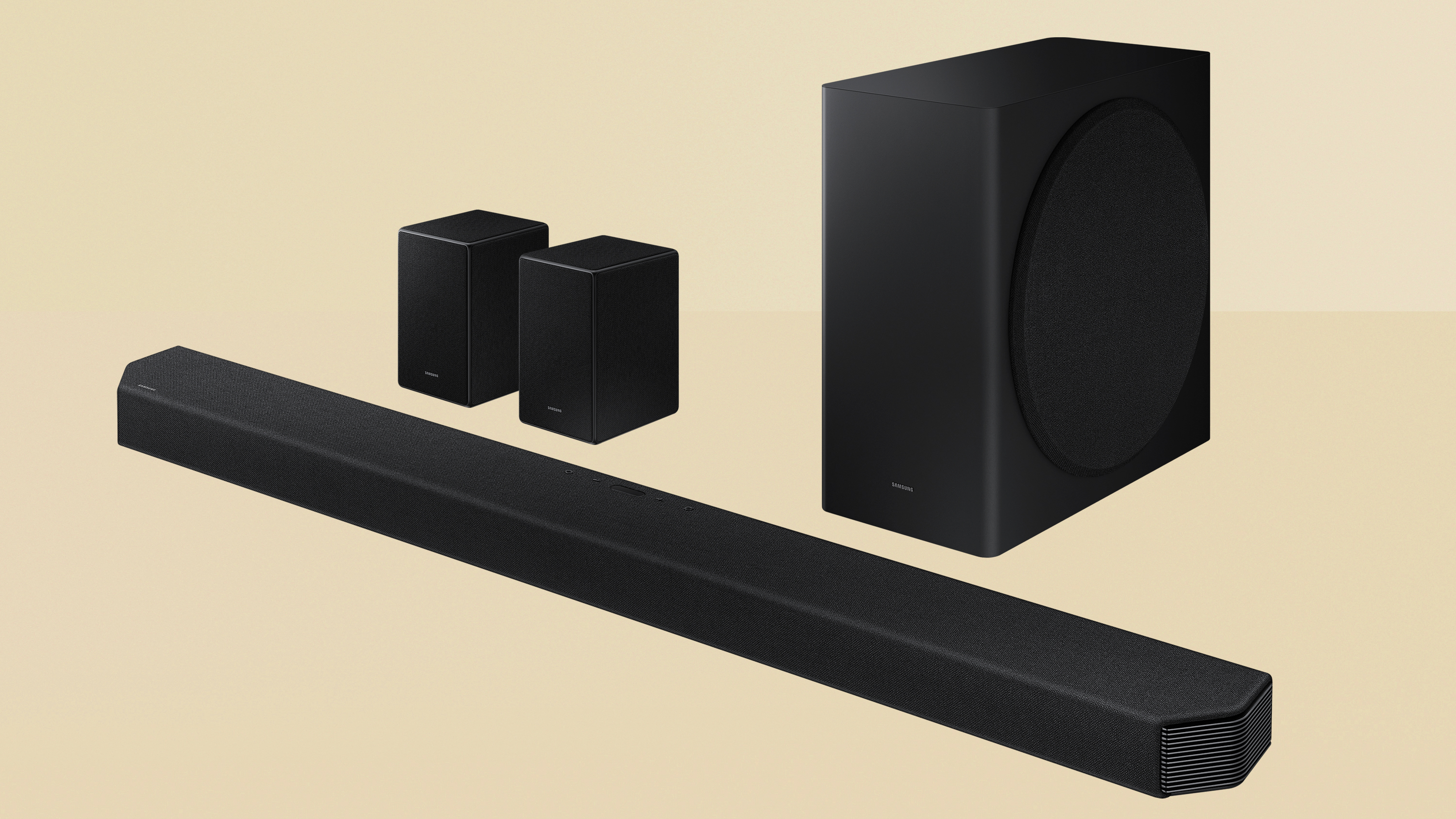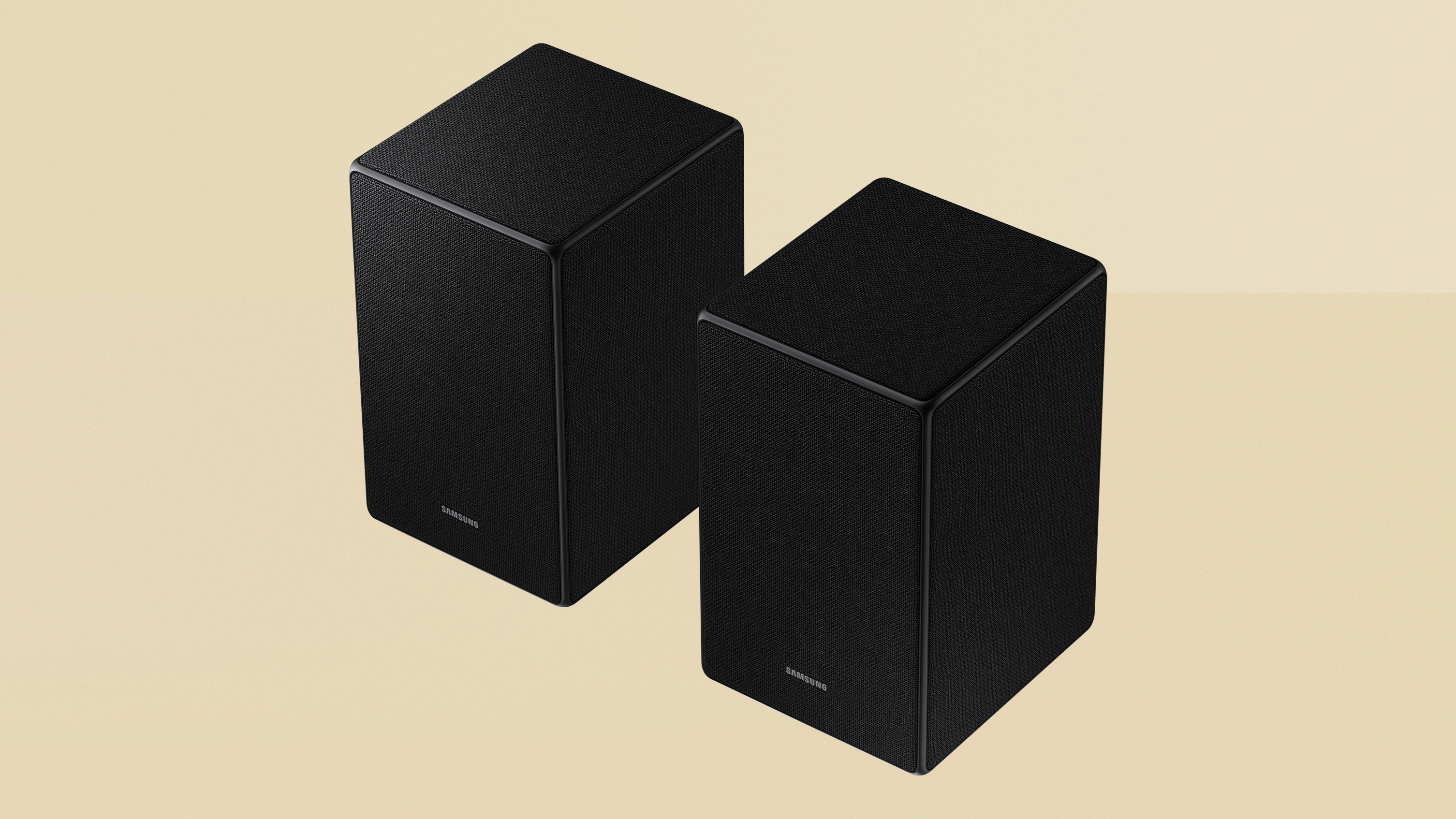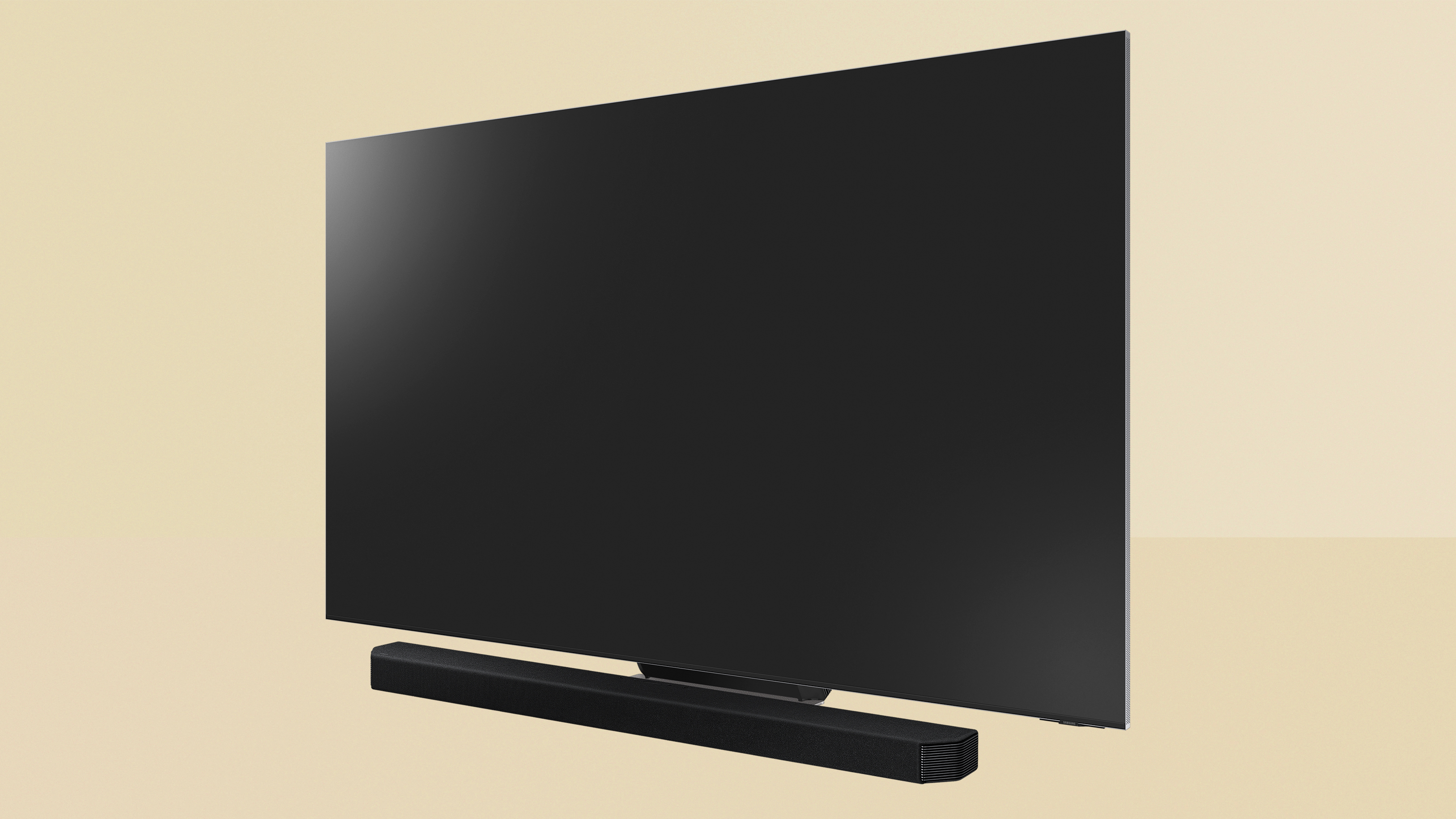Samsung HW-Q950A review: still a great Dolby Atmos soundbar experience
The Samsung HW-Q950A is an 11.1.4-channel monster of a soundbar, and it's a great audio upgrade for your TV


The Samsung HW-Q950A combines of the power and precision of a high-quality separates system with the compact form factor of a soundbar – it's a spectacular success.
-
+
Hugely powerful sound
-
+
Uniquely complete 3D soundstage
-
+
Q-Symphony feature on Samsung TVs is great
-
-
Very premium price
-
-
Better for movies than music
-
-
No full auto-calibration system
Why you can trust T3

This Samsung HW-Q950A review looks at the new 16-channel monster that's arrived at the top of the company's 2021 soundbar range. It's since been replaced by 2022's HW-Q990B flagship, stepping things up yet further! As a home cinema upgrade, the Q905A is still a total beast, though, bringing one of the most complete and impactful Dolby Atmos 3D effects we've heard from any system.
Great success breeds high expectations, though, so it’s fair to say the new HW-Q950A had a large hill to climb, since previous Samsung soundbars have featured right at the top of T3's list of the best soundbars.
But this soundbar and rear-speakers setup turns out to meet even the loftiest expectations. It's not only among the best soundbars for Samsung TVs if money is no object, but is still up there among the single most cinematic soundbars available for those with TVs of 55 inches and upwards.
Samsung HW-Q950A review: Price & release date
The Samsung HW-Q950A was released in April 2021, and cost £1,599/$1,599/AU$1,499 back then. In the UK and US, that was undoubtedly a hefty sum to pay for a soundbar – but it's been reduced rather a lot following the arrival of the 2022 flagship, so an ideal way to pick up a bargain.
You could, after all, put together a pretty respectable separates system for this sort of money if you know what you’re doing. As you'll see, we think the HW-Q950A certainly earns its price tag, however, but there's no denying that it was a high launch price.

Samsung HW-Q950A review: Features & what's new
Samsung’s ambition with its latest flagship soundbar – as with its predecessors – is to deliver the sort of audio performance associated with a separates system from a package that also delivers the practical living space advantages of a soundbar (ie, it's smaller and simpler to set up).
In the Q950A’s case, it seeks to achieve this goal by combining a huge 616W of output power with a variety of tried and tested wide-dispersion speaker technologies and an exceptional number of real (as opposed to virtual) audio channels.
Get all the latest news, reviews, deals and buying guides on gorgeous tech, home and active products from the T3 experts
In fact, the Q950A increases the channel count from the already massive 9.1.4 of 2020’s Samsung HW-Q950T to an unprecedented 11.1.4, with the extra two channels coming in the form of new side-firing drivers inside each of the package’s two wireless rear speakers.
Given that these rears are still as impressively compact as they were before, squeezing in the new extra drivers – alongside the separate forward and up-firing drivers they contained before – feels like a serious engineering feat.
The main Q950A soundbar component remains pretty much unchanged from that of the Q950T. There are still seven main drivers (front centre, front left, front right, side left, side right and two up-firers for delivering Dolby Atmos/DTS:X height effects) squeezed inside an impressively slim and compact box.
The soundbar supports Bluetooth and Wi-Fi as well as carrying two HDMI inputs, an HDMI output with eARC support, and an optical digital audio output. The HDMI loopthrough supports Dolby Vision and HDR10+, as well as the basic HDR10 system, while the eARC support means it can receive lossless Dolby Atmos/DTS:X passed through from eARC-compatible TVs.
There’s no support for IMAX Enhanced DTS soundtracks. This wouldn’t in previous years have even come up in soundbar conversation, and IMAX Enhanced sources are still in seriously short supply. IMAX Enhanced support has started appearing, however, on one or two rival soundbar models, so it’s absence from the Q950A now at least warrants a passing mention.
The Q950A continues Samsung’s support for ‘Tap’ technology, where you can share content from compatible phones (Samsung models with Android 8.1 or above) simply by tapping them against the soundbar’s bodywork.
The wireless subwoofer boasts a meaty 8-inch side-firing driver despite being slim enough to tuck out of the way at the end of a sofa or under a sideboard.
While previous flagship Samsung soundbars have tended to impress in many ways, they’ve been criticised for not supporting any auto-calibration tools. The Q950A, though, mildly changes this courtesy of its SoundFit+ system. This combines two separate calibration approaches. The first works in tandem with compatible Samsung TVs, using their built-in microphones to tune the sound produced when you use Samsung’s Q-Symphony feature to combine the TV’s speakers with those of the soundbar.
The second uses test tones to fine tune how the subwoofer integrates with the rest of the dynamic range. While these moves are welcome, though, there’s still no full standalone auto-calibration system.
Two final new features the Q950A introduces over and above its predecessor are support for Apple Airplay 2, and Samsung’s Active Voice Amplifier technology. If this latter feature is active and the soundbar detects a loud ambient noise (such as a vacuum cleaner) for more than three seconds, the soundbar volume is increased and the sound profile is adjusted to give more emphasis to vocal tracks.

Samsung HW-Q950A review: Sound quality
With the speaker arrangement in the main soundbar and subwoofer sections remaining essentially unchanged from the 2020 HW-Q950T, our job with the Q950A is to some extent simply finding out whether the extra side-firing driver in each rear speaker really makes things better, or whether the technical challenge of fitting a third driver into such startlingly small rear speaker boxes has actually compromised rather than enhanced the rear sound stage. Especially since that older model is still on store shelves, and costs a lot less than this one following a year of discounting.
Happily, the extra drivers immediately make their presence felt. In fact, I’d say the way they add extra width and detail to the rear soundstage has more immediate impact than adding the extra side channels to the front soundbar did with the older Q950T.
The distinctive Dolby Atmos/DTS:X ‘dome’ of sound appears strikingly more complete, for starters. Although I hadn’t particularly noticed it when testing 2020’s Q950T, the Q950A immediately exposes a Q950T ‘blind spot’ off your left and right shoulders in the three-dimensional Dolby Atmos soundstage. Filling this gap takes the immersive qualities of the ‘object-based’ sound formats to an even higher level.
Rear steering and placement effects are much clearer and more accurately positioned too, and adding the extra driver to each rear speaker actually enhances your awareness of the entire rear soundstage, resulting in a more consistent sense of true immersion with a good Atmos or DTS:X mix.
Given that the rear speakers provide the main reason for stepping up to a Q950A from Samsung’s cheaper models, the enhanced rear soundstage actually makes the new model feel better value (at full price) than Samsung’s previous flagship models.
Having established that the Q950A’s biggest new feature really makes a difference, let’s remind ourselves of just how good the rest of the package is.
The main soundbar is phenomenally powerful, detailed, dynamic and aggressive. Effects are well positioned vertically or horizontally. Impact sounds hit harder (without sounding unnatural) than they do with any rival soundbar I’ve heard to date. Vocals are crystal clear, realistic and gently lifted, so that they don’t seem to be coming from below the picture on your TV. And the way sound expands out to fill your room from the soundbar’s compact, narrow physical start point defies comprehension.
The subwoofer, meanwhile, is as reliable as ever, churning out impressive amounts of deep, rich bass. The excellent dynamic range of the main soundbar means the subwoofer doesn’t sound detached from the rest of the sound mix either, and it’s nimble enough to avoid sounding baggy or laggy.
As usual with Samsung soundbars, the Q950A is more at home as a movie player than a music player. Regular stereo plays with plenty of power and detail, and there’s a good sense of scale and between speaker ‘space’. The presentation tends to feel slightly more muscular than musical, though, and lacks a little warmth and character.
Handily for Samsung, however, the rise of Dolby Atmos music, as recently bolstered by support from Apple, plays into the Q950A’s hands. Dolby Atmos by its nature benefits from a strong sense of three-dimensional space and plenty of power to drive effects effectively around that space – two things that the Q950A just so happens to excel at. So the more Dolby Atmos music comes online, the more useful as a musical as well as movie device the Q950A starts to look.

Samsung HW-Q950A review: Design & usability
The HW-Q950A feels more like a sonic TARDIS than ever. Just as Samsung didn’t substantially increase the physical footprint of the main soundbar of last year’s Q950T when it added new drivers there, the Q950A has now managed to add new drivers to its rears without, again, causing the system to have any more of an impact on your living room.
This is seriously impressive from a design perspective – especially as keeping the new rears to the same small size hasn’t compromised their sound quality. The main soundbar is 1232x69.5x138.0mm (48.5x2.7x5.4 inches), which makes it basically the same width as a 55-inch TV, so that's the minimum size you should pair it with. The subwoofer is 210x403x403mm (8.3x15.9x15.9 inches), and each rear speaker is 125x 203x141mm (4.9x8x5.6 inches).
Fresh out of the box the main soundbar looks clean, minimalistic and serious thanks to its excellent build quality, metallic corners and felt-covered main section. The felt does tend to collect dust and pet hair over time, though. Lots of soundbars suffer from this issue, of course, though the Sonos Arc has an all-solid exterior, if that's a concern for you.
The subwoofer is pretty chunky (as it needs to be, with an 8-inch driver to accommodate) and its black, angular body doesn’t blend particularly well into most decor. As with all subwoofers, though, since bass is non-directional the Q950A sub can be positioned somewhere out of sight without affecting its input on the system’s sound.
There is one seriously odd (in a bad way) thing about the Q950A’s design, though: the decision to place the soundbar’s LED on the back of the top edge. I guess this make it easy to see when you’re maybe leaning over the soundbar tapping your phone to establish a connection. For the vast majority of the time, though, the place you really want to be able to see the LED from is your sofa. Something that just isn’t possible on the Q950A.

Samsung HW-Q950A review: Verdict
The Samsung HW-Q950A is an outstanding high-end soundbar. The impact of those rear channels is obvious, adding an extra layer of immersive excellence to a wider audio performance that’s highly accomplished.
Better still, as the Q950A has now been replaced by the Q990B (2022's flagship), the price has dropped by over a third, meaning that if you can forego the slightly better sound immersion from the newer model then you've got an incredible option on the cards here.
Also consider
Even today the biggest rival to the HW-Q950A is its predecessor, the Samsung HW-Q950T. We've already talked about how they compare, and you can read our full Samsung HW-Q950T review for more on that soundbar's features and sound quality. And if you want most recent best-of-best stuff then it's the HW-Q990B where you need to head.
The big competitor from another company is the LG SP11RA, which we'll have a review of shortly. It's another full surround system, but we'll spoil our review early by saying the Samsung beats it on pure cinematic power.
And finally, don't overlook the Sonos Arc. It's a one-box soundbar (no subwoofer included), and is among the very best-sounding soundbars, especially if you also like to listen to music. It's not cheap for a system with no subwoofer, and annoyingly it has no HDMI passthrough, but for audio quality alone, it's still wonderful.
John Archer has been testing TVs and AV gear for over 25 years, having worked on Home Cinema Choice magazine. He's a contributor to Forbes, TechRadar, Trusted Reviews, Wired and many more places – if you've owned a TV in the last couple of decades, John's probably reviewed it somewhere. He's seen so many hot new technologies come and go, like tears in the rain.
